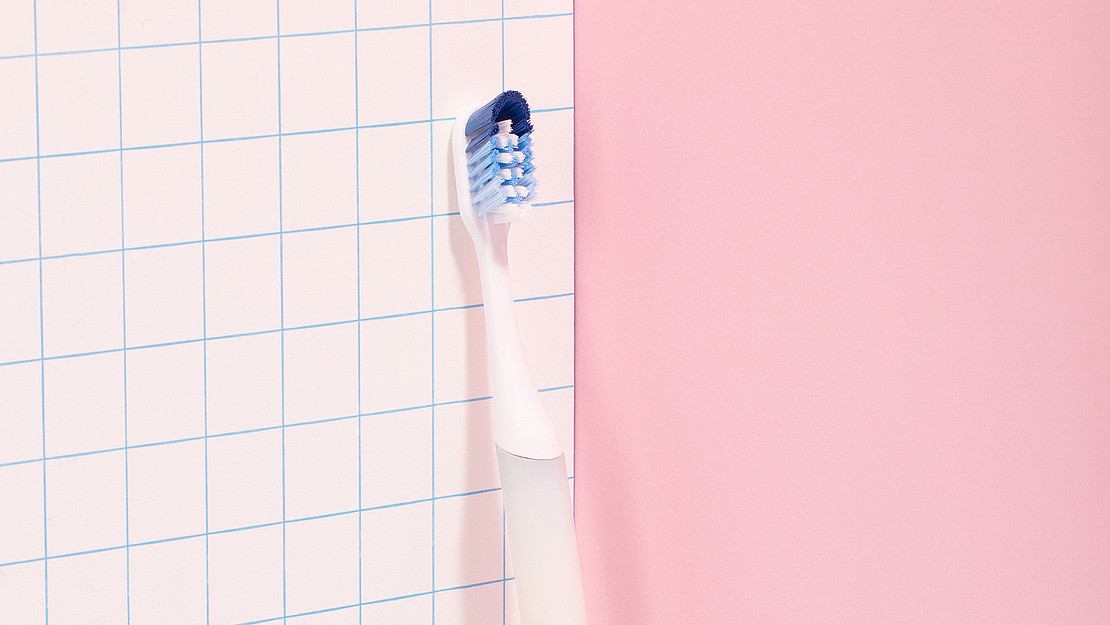This page contains automatically translated content.
Toothbrush for clean seas
 Image: Lisa-Maria Schmidt
Image: Lisa-Maria SchmidtPlastic is everywhere. According to NABU - Naturschutzbund Deutschland e.V. - around ten million tons of plastic waste end up in the world's oceans every year. Product design student Lisa-Maria Schmidt thought about how to deal more responsibly with her own household waste. She designed an interchangeable ceramic toothbrush.
Her product was created as part of the semester project "Ceramics to GO," supervised by Prof. Robert Suk (Project Professorship Product Design). In this project, students were asked to develop sustainable alternatives to products in order to counteract the growing mountain of plastic waste worldwide.
Lisa-Maria Schmidt came up with her brilliant idea while brushing her teeth: "In the past, there was the interchangeable toothbrush, where only the bristles were replaced. I asked myself why, especially now, when the issue of sustainability is more urgent than ever, this toothbrush has fallen into oblivion," explains the student.
Dentists recommend changing toothbrushes at least every three months. Based on this prognosis, millions and millions of toothbrushes are produced, used and disposed of every year in Germany alone. "A huge amount of raw materials are used here, which end up in the trash. With the ceramic interchangeable toothbrush, we could save up to 70 percent of the plastic waste caused by conventional toothbrushes," says Schmidt. She adds, "The brush head is still made of plastic, because ceramic can damage teeth and gums. But instead of disposing of the toothbrush completely, the hand part can be easily cleaned in the dishwasher."
Bamboo toothbrushes are not sustainable
The designer could have used another sustainable material for her toothbrush. But not everything labeled as sustainable is actually environmentally friendly: to avoid plastic, for example, some manufacturers rely on bamboo toothbrushes. However, the bristles of these brushes are usually made of nylon-4 and thus derived from petroleum. But even when bio-plastic is used, there are problems - while it is degradable in principle, it is not so quickly that the toothbrush can be disposed of in the organic waste garbage can: "The bristles from the brush are laboriously pulled out and disposed of in the residual waste. In addition, field reports have shown that the bamboo toothbrush quickly becomes moldy and can therefore no longer be used hygienically," Schmidt points out.
To realize her product idea, the designer first tested many toothbrushes made of different materials and shapes. "I wanted to see how the design would affect handling," says Schmidt. In addition, she said, she studied medical dental instruments intensively. It was important to her, she says, that her toothbrush be ergonomically well-shaped: "I tried to incorporate various study results into my design. The brush should be round where the thumb and index finger rest, so that it can be moved up and down by small rotation to clean the teeth effectively," Schmidt explains.
With her design, she wants to bridge the gap between material, form and function, using the feel of porcelain and special shape details to create an ergonomic, timeless brush. "I wanted to develop an object that people enjoy using and that feels good in their hands," says Schmidt.
The student made two important collaborations for her project. Through her professor Robert Suk, the collaboration with Rosenthal GmbH came about, as Prof. Suk is also the design director there. Schmidt now receives the ceramics for the production of her toothbrush from Rosenthal. On her own initiative, she also presented her concept to Braun® / Oral-B: "The company was willing to support my project and provided me with the brush head," says the product designer happily.
Lisa-Maria Schmidt is studying product design (diploma) and art science (master's degree) in her 7th semester at the Kassel University of Art and Design. Her interchangeable head toothbrush (20 cm long) is currently being produced by Rosenthal. The student has not yet applied for a patent for her prototype: "I would be incredibly happy if my toothbrush could be bought at some point," Schmidt hopes. The designer would like to continue working on this topic in her diploma thesis.
Text: Çiğdem Özdemir